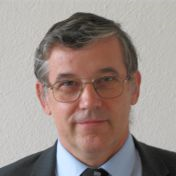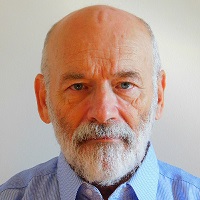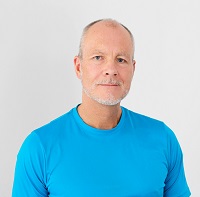Honorary and Invited Speakers
HONORARY SPEAKERS
Wladimir ANDREFF
University Paris 1 Panthéon-Sorbonne, Observatory of the Sports Economy, French Ministry for Sports, France

Outward Foreign Direct Investment from the New-Wave Emerging Countries
Focusing on the fast growth of Brazil-Russia-India-China’s, i.e. BRICs’ outward foreign direct investment (OFDI) and multinational companies during the crisis (Andreff 2014, 2016 a, &b; 2017) has left unheeded that some other emerging economies also grow much faster than average in the global economy and have become significant and fast-growing direct investors abroad. A sample of such (thirteen) new-wave emerging countries (NWECs) is gathered on the criterion of being ranked among the most significant foreign direct investors in the global economy (Andreff, 2016c). A literature review exhibits only very few articles existing on OFDI and multinational companies from these NWECs so far. Then gathering descriptive statistics enable tracing OFDI by NWECs-based multinational companies back to the 1970s, checking its geographical orientation and industrial structure, and assessing the relative importance of cross-border mergers and acquisitions in the expansion of such new coming OFDI. A simple econometric estimation exhibits that direct investment moving off the NWECs is explained by so-called push factors such as the home country’s GDP, GDP per capita, GDP rate of growth, the share of high-technology exported products in overall export, the number of technological patents registered, and how much inward foreign direct investment stock has previously been hosted. These results are discussed in the light of Dunning’s investment development path model (1981, 1988; Dunning & Narula 1998) and Matthews’ linkage-leverage learning hypothesis (2002).
Time and date of presentation: May 21, 2020 at 4 p.m.
The stream of the session may be viewed via the link
Alain BERTAUD
New York University, USA

The functioning of Urban Labor Markets: Mobility and Housing Affordability
Cities are primarily labor markets. Well-functioning labor markets allow the emergence of high-quality urban amenities like theaters, museums, parks, restaurants, and many other attractions. The per capita productivity of cities increases with the size of their labor markets. However, the number of workers in the labor force indicates only the size of a potential labor market. Because deficient urban transport systems decrease workers' mobility within a metropolitan area, large labor markets become fragmented into smaller adjacent markets, minimizing the potential productivity of a city. Unaffordable housing, created by constraints on urban land development and housing supply, can also reduce the size of labor markets by either preventing workers from migrating to a city or by segregating low and medium-skilled workers into distant, poorly accessible areas.
Because the productivity of cities is so dependent on well-functioning labor markets, increasing mobility and improving affordability should be the primary objective of urban planners. They should monitor the evolving location of jobs within a metropolitan area and develop transport systems that reflect the demand-driven geographical distribution of employment and housing. They should build multimodal transport systems that would best increase mobility under a continually evolving urban land use. They should audit land use regulations to allow both firms and workers to consume the quantity of land and floor space that best fits their requirements in specific locations. Planners should continuously monitor the housing affordability of different income groups and take remedial action as soon as housing becomes unaffordable to workers in different sectors of the urban economy.
Time and date of presentation: May 21, 2020 at 5 p.m.
The stream of the session may be viewed via the link
Paolo BISOGNI
Catholic University of Milan, Italy

Shaping Logistic Competencies in Turbulent Times
In an era characterized by turbulence and discontinuity, by ever-changing scenarios, by a sophisticated highly demanding and highly evolved clientele, by exogenous shocks of a destabilizing nature and pandemic flow (the last in order of occurrence is the coronavirus), logistical skills require a profound rethinking and formalization.
The European Logistics Association, ELA, is actively keeping standards of logistics competence up to date to meet these challenges. This paper reflects on two sessions of experimental workshops working with logistics industry leaders to formulate modern era required competencies in emerging areas of logistics in the light of digitalization, resilience and sustainability.
Moreover, in addition to an update, the standards also require sectoral customization, especially in the maritime sector where some peculiar features distinguish it from the more widely known manufacturing one. The complexity of the scenario because of the concentration of operators, digitalization, the growing size of vessels, the concerns for sustainability and others contingent factors makes us believe that standard skills to operate in logistics are a prerequisite but not sufficient. For these reasons, a revision and re-design of the standard competencies for both managerial and operational positions is needed.
Aim of the research is to understand if qualification systems are consistent with the evolving markets’ needs.
Time and date of presentation: May 25, 2020 at 4.40 p.m.
The stream of the session may be viewed via the link
Curt BONK
Indiana University, USA

Education 20/20 meets Education 4.0: Visions of Our Changing Learning World!
The pervasive boredom of rote learning seen in Education 1.0 finally yielded to a more learner-centered age of Education 2.0 a few decades ago. Today instructors are confronted with the possibilities and dilemmas of Education 3.0. But now with climate change, dramatic economic unrest, the rise of robotics, world population shifts, and so on, the innovation age of Education 4.0 is desperately needed. As we head toward the Year 2020, we humans are in the midst of a learning revolution.
During the past few years, learning has become increasingly collaborative, global, mobile, flipped, modifiable, open, online, blended, massive, visually-based, hands-on, ubiquitous, instantaneous, on-demand, adaptive, and personal. And this is just a start! This is the age of Education 3.0 where learning is more informal, resource rich, and self-directed and where learner creation of products is the new norm, often with the use of digital media. But wait, many are already hearing the drumbeats of Education 4.0 on the horizon. Can we get there? Fortunately, we are living in an age of educational resource abundance where passion, play, purpose, and freedom to learn take precedence over the more mind-numbing traditional information reception models of learning. The instructors and experts whom we meet and interact with along the way are most effective as curators, counselors, consultants, concierges, and cultivators of our learning. And now such mentors, tutors, experts, colleagues, and instructors can appear instantaneously on a mobile device. Perhaps that is a sign that Education 4.0 is not far away. Naturally, such new instructor roles require a unique and evolving set of guiding principles. As such, Professor Bonk will detail a set of 20 “last” principles of instruction with his “Learning Activation System Template” (LAST) including the Principle of Flexibility, the Principle of Meaningful Learning, the Principle of Choice and Options, the Principle of Cheerfulness and Optimism, the Principle of Spontaneity, the Principle of High Expectations, the Principle of Nontraditional Learning, etc. Suffice to say, there is immense change around the world today related to new forms of learning typically involving technology. In fact, there are three megatrends related to learning technology today: (1) technologies for engagement; (2) technologies for pervasive access; and (3) technologies for the personalization and customization of learning. To better understand these new forms of learning delivery, Professor Bonk will discuss these three megatrends as well as his recent research on the personalization of e-learning. Along the way, insights will be offered into how one might teach in this new learning age. Finally, these days seem ripe for gazing into a crystal ball and pondering what human learning will look like 5, 10, or even 25 or more years into the future. How will we learn? Where will we be learning? And who, if anyone, will we be learning with? Professor Bonk will end his talk with innovations in learning technology, instructional approaches, and the spaces and places for learning to occur. This will include predictions of the future such as robot partners on collaborative teams, world knowledge refreshment stations, Professor Einstein PDAs, the rise of super e-mentors, classrooms as cafes, learning environment engineers, and much more. Is this an evolution or a revolution? Professor Bonk will let the audience decide.Jason BROWNLEE
Texas University, USA

Understanding Democratic Breakdowns and Authoritarian Onsets, 1989-2018
Has the world entered an age of authoritarianism? Rigorous answers to the question have been difficult to reach, leaving academics and laypeople to speculate about how severely the latest strongmen and populists threaten western and developing democracies. This paper applies a robust version of Freedom House’s dichotomous electoral democracy measure during 1989-2018. Using these data, the paper asks: 1) Have democratic breakdowns become more frequent in the past decade? 2) Are these breakdowns ushering in sustained authoritarianism? On both questions, initial evidence does not support prognoses of a rising wave of authoritarianism. The paper then reports tests from a series of economic and institutional predictors for the onset of authoritarianism in electoral democracies.
Time and date of presentation: May 27, 2020 at 5 p.m.
A recording of the report's presentation can be accessed via the link
Bernard CORNET
Journal of Math Economics, France

Financial Markets with Hedging Complements
This paper considers arbitrage-free financial markets with frictions that are represented by bid-ask spreads, and focuses on the important class of markets which exhibits hedging complements. Perfect complementarity has long been regarded by economists to be formally expressed by submodularity (resp. supermodularity) or by the decreasing (increasing) difference property of cost (utility) functions. Thus, hedging complements of a market are formalized by the complementarity of its hedging price and/or super-hedging price in the same way as strategic complements of agents’ payoff functions in game theory; see Bulow, Geanakoplos, and Klemperer (1985). Our first contribution shows that the hedging price of a market with independent marketed bid-ask securities is submodular and has a tractable explicit formula, as the sum of a “generalized” convex Choquet integral and of a modular term. Moreover, the hedging price is “generically” a generalized convex Choquet integral, since the second term is null “generically.” Thus, for a market with independent marketed bid-ask securities, the multi-prior model by Gilboa and Schmeidler (1989) coincides “generically” with the Choquet expected utility model of Schmeidler (1989), in the sense that the non-additive risk-neutral probability associated with the Choquet integral is able to summarize the information of the bundle of standard risk-neutral probabilities. Second, we study the class of markets with hedging complements or equivalently with hedging price that is submodular. Such markets with hedging complements, once normalized, satisfy the call-put inequality considered by Chateauneuf, Kast, and Lapied (1996) and confirmed by empirical research. Moreover, modifying the definition of parity as in Cerreia Vioglio, Maccheroni, and Marinacci (2015) their put-call parity holds for markets with independent marketed bid-ask securities (or with hedging complements). This comes from the fact that the notion of generalized Choquet integral used in the paper is equivalent with the notion of Choquet integral on Riesz space introduced by Cerreia-Vioglio, Maccheroni, Marinacci, and Montrucchio (2015b).
Michele J. GELFAND
University of Maryland, USA

The Secret Life of Social Norms
Over the past century, we have explored the solar system, split the atom, and wired the earth, but somehow, despite all of our technical prowess, we have struggled to understand something far more important: our own cultural differences. Observing the wide variety of cultural permutations, people assumed for centuries that there were as many explanations for these permutations and rifts as there were examples of them. Michele Gelfand’s research shows that many cultural differences reflect a simple, but often invisible distinction: The strength of social norms. Tight cultures have strong social norms and little tolerance for deviance, while loose cultures have weak social norms and are highly permissive. The tightness or looseness of social norms turns out to be a Rosetta Stone for human groups. It illuminates similar patterns of difference across nations, states, organizations, social class, and households. It is also a global fault line: many of the conflicts we encounter spring from the structural stress of tight-loose tension. By unmasking culture to reveal tight-loose dynamics, we can see fresh patterns in history, illuminate some of today’s most puzzling trends and events, and see our own behavior in a new light. At a time of intense political conflict and rapid social change, this template shows us that there is indeed a method to the madness, and that moderation – not tight or loose extremes – has never been more needed.
Time and date of presentation: May 21, 2020 at 4 p.m.
A recording of the report's presentation can be accessed via the link
Ger GRAUS
Higher School of Economics, KidZania, United Kingdom

How Prepare for Digital Era? Digital Literacy through Non-formal Education
Children’s social mobility in the 21st century is a key topic of the global education agenda. Digital education can play and should play a significant role in this challenge. The great efforts of educational leaders make possible the creation of real educational eco-system that includes the wide sector of non-formal education as an innovative learning and education provider. The rapidly developing non-formal education market is becoming one of the main sources of digital innovations and transformations that are implemented in traditional online learning and edutainment formats.
Non-formal education is also not only an environment of digital educational spaces, but it also allows us to update the content of education, integrating the tasks of the digital era, the needs of the educational process participants and the real market. In this regard, studying the experience of providers becomes critical for understanding the processes of real digitalization of the environment and meanings.
KidZania’s global education strategy includes an experience-based learning approach, Think-Tank, Ambassador Schools and Industry Partners; there is a very important focus on local, contextualized implementation, and evaluations. The discussion about the benefits of digital formats in education is more than ever relevant. There is a wide corpus of studies of the positive effects of edutainment and STEM-education, especially, related to children’s motivation and their enhanced involvement. However, there is a current lack of focus on content that helps children to meet real digital life experiences - too much effort is centered on theory rather than its conversion into practice. Edutainment centers, new science museums and KidZanias amongst others are working to fill this void.
KidZania’s approach to education and entertainment is leading to enhanced life chances for children, through purposeful and innovative ways of engaging with the private sector including digital approaches, and an evidence-based voice in the world of education and entertainment, as well as a sustainable, socially responsible approach to partnerships: return on involvement instead of return on investment. The important focus and the point of contact between researchers and practitioners is the current global schooling and educational environment, their disconnect, the value of experience-based learning and its connections, for better and for worse, with the digital agenda. Can digital really mean better?
In order to move in the right direction for all children, we must however be very mindful of individual children’s socio-economic and socio-cultural contexts. We have an opportunity to get this very right … or very wrong. Will we aid the global educational democratization or widen the gap between have and have-not, between know and know-not and between can and cannot?
Harald HAGEMANN
University of Hohenheim, Germany

Wassily Leontief and His German Period
Wassily Leontief (1905-1999) moved from Leningrad to Berlin in 1925 where he received his PhD with the thesis ‘The Economy as a Circular Flow’ in 1928 which “sounds the first note of the overture to his Ring of Input-Output” (Samuelson). From May 1927 to summer 1931 he worked at the Kiel Institute of World Economics. There he was primarily engaged in the derivation of statistical supply and demand curves which led to two major papers and a fierce controversy with Ragnar Frisch. Leontief’s work on the employment consequences of technological change in the 1980s has also some roots in the Kiel period.
Time and date of presentation: May 27, 2020 at 2 p.m.
The stream of the session may be viewed via the link
Ronald F. INGLEHART
University of Michigan, USA

Secularization Accelerates:The Shift from Pro-fertility Norms to Individual-choice Norms
Well into the Twentieth Century, leading social thinkers held that religious beliefs would decline as scientific knowledge and rationality spread throughout the world. The growth of fundamentalist movements in many countries and the religious revival in most former communist countries, demonstrated that religion is not disappearing and even brought claims of a “Global Resurgence of Religion.” The most influential recent challenge to the secularization thesis—Religious Markets theory-- argues that established churches become complacent monopolies but competition between churches brings high levels of religious participation. Norris and Inglehart (2004) proposed an alternative to the early version of secularization theory’s emphasis on cognitive factors and to Religious Markets theory, arguing that insecure people need the predictability of traditional religion’s absolute rules, but that as survival becomes more secure, it reduces mass demand for religion. This paper demonstrates that in recent years, secularization has not only persisted, but accelerated in much of the world, largely because of two related cultural shifts: (1) Rising existential security brings declining demand for religion, because insecure people need the predictability and absolute rules of traditional religion. But another factor is at least equally important:(2) A shift from Pro-fertility norms to Individual-choice norms. Virtually all world religions instill Pro-fertility norms, which were needed for societies to survive under conditions of high infant mortality and low life expectancy. These norms require people to suppress strong natural urges, but because infant mortality has fallen to a tiny fraction of its former level and life expectancy has almost doubled since 1890, they no longer are needed for survival. After an intergenerational time-lag, Pro-fertility Norms, emphasizing traditional gender roles and stigmatizing any sexual behavior not linked with reproduction, are giving way to Individual-Choice Norms supporting gender equality and tolerance of divorce, abortion and homosexuality. In most countries, this is eroding traditional religious worldviews that had endured for centuries. But the collapse of Marxist belief systems left a spiritual vacuum among the publics of most ex-communist countries that is being filled by nationalism and rising religiosity, bringing a reversion to emphasis on traditional Pro-fertility norms.
Time and date of presentation: May 25, 2020 at 4 p.m.
The report will be presented as part of the associated event 10th LCSR International Workshop "Comparative social research".
A recording of the report's presentation can be accessed via the link
Juraj NEMEC
European Association for Public Administration Accreditation, Czech Republic

Factors Determining Efficiency of Public Procurement in Slovakia (but also in the whole CEE region)
The presentation will discuss the main factors causing inefficiencies in the Slovak public-procurement system – and as our experience indicate, the findings are fully relevant for all countries in our CEE region (common problems and common mistakes). The data were collected by the secondary research and also by the primary research – the questionnaire survey of the contracting authorities and suppliers, interviews with experts. The results are as follows. The first critical factors is the excessive bureaucracy in public procurement, including the impact of frequent legislative changes – because it generates excessive transaction costs. Slovak procurement legislation was revised 35 times in the decade after 2006 – in such situation effective procurement is rather problematic. Our survey showed that in 2017, 68 % of contractors and 59 % of suppliers identified excessive bureaucracy as one of the top three efficiency problems with the Slovak procurement system. 56 % of contractors also blamed frequent changes in legislation.Second, corruption and other ethical shortcomings raise procurement costs and may damage the quality supplied. Our 2017 survey results show that 56 % of contractors blamed corruption and non-ethical behaviour for inefficiencies. In addition, 49 % of suppliers blamed corruption and 59 % blamed non-ethical behaviour.Third, limited competitiveness, in the form of too few bidders, means possible savings are missed. 16 % of contractors, and 8 % of suppliers identified competition as a major efficiency problem. Finally, excessive use of the lowest-price selection criterion for services and works can adversely affect quality and lead to non-transparent procurer-supplier relations. 29 % of suppliers picked out poor quality control as a top-three problem.
Date of presentation: April 9, 2020
The report has been presented as part of the associated event EACES Workshop "Public Procurement in Central and Eastern Europe and Russia".
A recording of the report's presentation can be accessed via the link
Arthur C. PETERSEN
University College London, Great Britain

Dealing with Uncertainty and Ignorance in Science, Religion, and Public Policy
Uncertainty and ignorance are what make diverse types of practices, such as science, religion, and public policy, inspiring – while they are full of difficulties. How do these practices respectively deal with uncertainty and ignorance? To answer this question, I propose a philosophy of culture that adopts a transcendental naturalistic attitude, which offers both a corrective against scientistic naturalism and an openness towards a variety of values. I give examples of how this philosophical framework helps to interpret some of the alleged problems of modernity, specifically: the religious disenchantment of nature, the scientific disbelief in a plurality of value-laden perspectives, and the disregard for non-modern worldviews in public policy.
Yong SHI
College of Information Science & Technology, Chinese Academy of Sciences, China

Big Data Analysis: Theory and Applications
Big Data has become a reality that no one can ignore. Big Data is our environment whenever we need to make decision. Big Data is a buzz word that makes everyone understands how important it is. Big Data shows a big opportunity for academia, industry and government. Big Data then is a big challenge for all parties. This talk will discuss some challenges of Big Data analysis as well as Data Science, the scientific issues behind Big Data. Then, this talk will provide several real-life Big Data Applications.
Time and date of presentation: May 20, 2020 at 4.30 p.m.
A recording of the report's presentation can be accessed via the link
INVITED SPEAKERS
Paul CHAISTY
Oxford University, Great Britain

Attitudinal consolidation in Russia in comparative perspective: Survey evidence from 1993-2018
(co-authored with Stephen Whitefield, Oxford University)
This talk will explore the extent to which there has been the consolidation of public attitudes towards political issues in Russia over the last quarter of a century. More specifically, it will examine whether citizens’ judgements about policies across a range of issue areas have become less normative and more rooted in citizens’ experiences, interests, social locations, and organisational attachments. Drawing on surveys conducted at regular intervals since the early 1990s, it will seek to identify the ways in which the structure of citizens’ political attitudes in Russia differs (if at all) from 'consolidated' cases, and whether it is necessary to reconsider theories of attitudinal consolidation in the context of 21st century politics.
Time and date of presentation: May 28, 2020 at 4 p.m.
Marek DABROWSKI
Bruegel, Belgium

Factors Determining Russia’s Long-term Growth Rate
In the decade of the 2010s, the pace of economic growth in Russia slowed down to an annual rate of below 2% and most forecasts suggest that this is will be the new “normal” for the Russian economy at least in the medium-term. While politically and socially disappointing, such a growth slowdown is unavoidable due to adverse demographic trends. A combination of a shrinking working-age population and population aging must lead to a lower growth pace as compared to the period when the working-age population was still increasing and the effects of population aging were limited (the decade of the 2000s). Compensatory measures such as a gradual increase in the retirement age and an open labor migration policy, although economically positive, can only partly mitigate the negative effects of a shrinking domestic labor force. In this respect, Russia does not differ from other European countries and some Asian countries. However, demography and shrinking labor supply cannot fully explain low potential growth. Stagnation in total factor productivity is another reason. It results from a poor business and investment climate, difficulty in diversifying away from the dominant role of the hydrocarbon sector, and deteriorating political and economic relations with the US and EU which limit trade, investment and innovation opportunities. To increase its potential growth, Russia needs comprehensive economic and institutional reforms that, in turn, will be conditioned by political reforms and by improved economic and political relationships with the US, the EU and Russia’s neighbors.
Mark de HAAN
Central Bureau of Statistics, International Association for Research in Income and Wealth, Netherlands

Eight Years of Standardization in National Accounting for Natural Resources: What Have We Learned?
The 2012 System of environmental-economic accounting (SEEA; seea.un.org) is an international statistical standard for measuring the environment and its relationship with the economy. In the SEEA the asset accounts for natural resources cover stocks of individual assets such as water, biological resources, minerals and energy assets. The SEEA provides the proper classifications and concepts for compiling for each of these natural resource categories balance sheets in quantity units. Subsequently, valuation techniques explained in the SEEA support national accountants in compiling natural resource accounts also in money units. The natural accounts in value terms assist in providing a comprehensive picture of a nation’s net worth. At the same time losses in natural asset values, due to their extraction, will show up in the SEEA as a cost of production. The latter is not recommended in the System of National Accounts (SNA). Since its release many countries have gained experience in putting the SEEA-CF into practice. In the meantime supplementary guidance was being provided in the form of an experimental system of ecosystem accounting (seea.un.org/ecosystem-accounting). In this lecture the successes and challenges of natural resource accounting are being reviewed. Thorny issues such as identifying economic ownership (in contrast to legal ownership), measurement of resource rents, the sectoral resource rent allocation and valuation techniques are being discussed in some detail. These issues are of significant importance in the context of environmental accounting but have recently also received an interest from the point of view of an upcoming update of the SNA. The lecture will also touch upon the future possibilities to fully integrate the SEEA and the SNA.
Henry HALE
George Washington University, USA

Rethinking Civilizational Identity: Perspectives from Below in Russia
Civilizational identity is widely invoked by politicians around the world, but its association with widely discredited primordialist claims has left it strangely understudied in contemporary social science. The research to be presented argues for reconceptualizing the notion of “civilization” to bring it better into line with what we know about the socially constructed nature of identity and the cognitive purposes that identity generally serves. An approach is then presented for identifying how ordinary people themselves understand appeals to civilizational identity like those their politicians frequently make, and new survey evidence from the 2010s is presented on patterns of civilizational identity in Russia and its implications for political behavior.
Renato FERRANDI
Organisation for Economic Co-operation and Development

Time and date of presentation: May 29, 2020 at 10 a.m.
The report will be presented as part of the Special Roundtable "Searching for a New Multipolarity Architecture: EAEU International Cooperation".
The stream of the session may be viewed via the link
Anna FURSE
Goldsmith University, Great Britain

Ephemeral Arts in a World of Science
Looking at examples of research-informed pedagogy, she will demonstrate how a curriculum is shaped by research specialisms. She will explain Practice-as-Research as it is understood in the UK academic system, and raise some of the germane problems it raises, as well as innovations it can stimulate. She will locate her discourse in examples of her own academic practice research, PhD supervision of practitioners’ theses, curriculum design at undergraduate and postgraduate level. She will note the question of assessment and some of the issues raised here in what is an essentially ephemeral and collaborative artform.
Anna’s address will position all of these ideas within the UK’s Research Excellence Framework (REF 2020) from her position as a researcher submitting both published and creative outputs, and as Co-Director of the Department’s Research Committee, who is responsible for calibrating and writing the Department’s REF submission. REF, in turn, has economic implications as it requires the submission of department and College research into a UK League Table that is published – a protocol symptomatic of an increasingly commodified educational apparatus within a fee-paying HE climate.
Finally, she will discuss criteria and terminology for establishing excellence in research in REF terms, and what is understood as “social engagement” and “impact” of such calibrated academic research outputs. Finally, given the instrumentalization of scholarship, research, pedagogy and learning, she will question the purpose of pedagogic design and delivery in a social environment where there is increased pressure to produce employability data.
In short, she is going to speak about the fragility of the arts education – and especially ephemeral practice - in the current social and economic environment, and argue forcefully for its necessity, globally, as a means by which to make sense of our world – and change it - and how educators work imaginatively to respond to this challenge.
Time and date of presentation: June 4, 2020 at 9.30 a.m.
Rustam IBRAGIMOV
Imperial College, UK

Predictability of Cryptocurrency Returns: Evidence from Robust Tests
Due to inherent heterogeneity and dependence properties of returns and other time series in financial and crypto markets, we provide the analysis of the predictive regressions using heteroskedasticity and autocorrelation consistent (HAC) standard-errors. We further present the analysis of the predictive regressions using recently developed t-statistic robust inference approaches (Ibragimov and Mueller, 2010, 2016). Robust tests in the approaches are based on t-statistics in group estimates of predictive regression parameters and do not require consistent estimation of their limiting variances, as in HAC methods. The approaches have been shown to have appealing finite sample performance for time series, panel, clustered and spatially correlated data exhibiting heterogeneity, autocorrelation and dependence of largely unknown form that are typical for real-world financial and economic markets. We provide comparisons of robust predictive regression estimates between different cryptocurrencies and their corresponding risk and factor exposures. In general, the number of significant factors decreases as we use more robust t -tests, and the t -statistic robust inference approaches appear to perform better than the t-tests based on HAC standard errors in terms of pointing out interpretable economic conclusions.
The results in the paper emphasise the importance of the use of robust inference approaches in the analysis of economic and financial data affected by the problems of heterogeneity and dependence.
Hanspeter KRIESI
European University Institute, Italy

Is There a Crisis of Democracy in Europe?
This presentation addresses the current talk about a crisis of democracy in Europe in the light of some empirical evidence about long-term trends and their articulation in Europe’s party systems. It suggests that the crisis talk is largely exaggerated. I present my argument in three steps. In step one, I adopt the perspective of the citizens and ask whether they adhere to the principles of democracy, and how they evaluate democracy in Europe. In fact, they largely support the principles, but are highly critical of the way they are currently implemented in their own country. In step two, I adopt the perspective of the voters and discuss the rise of populism in Europe. While acknowledging the rise of populism, I suggest that we need to be careful about how to interpret it. In particular, we need to distinguish between two forces on which it builds – the long-term structural change of society and political dissatisfaction. Finally, I turn to the perspective of the elites, i.e. to the question of what happens when populists get into power. I discuss five factors that serve to constrain the threat posed by populists in power – institutional, partisan, international, market constraints and constraints imposed by citizens. My overall assessment of the state of democracy in Europe is that there is reason for concern, but no reason for panic.
Time and date of presentation: May 14, 2020 at 5 p.m.
The report will be presented as part of the associated event 10th LCSR International Workshop "Comparative social research".
A recording of the report's presentation can be accessed via the link
Alice PEZARD
Paris School of International Affairs, France

Russell PITTMAN
The United States Department of Justice, USA

The New Political Economy of World Railways Restructuring
In recent decades the world has moved from one of state-owned monopoly railways to something else – but what? Reformers in the 1980’s and early 1990’s tended to accept the advice from economists that railways were like electricity, telecommunications, and other “natural monopoly” sectors, in which potentially competitive activities should be completely separated from the ownership and operation of the network, which would remain a monopoly – generally a state-owned, “natural monopoly”. A minority group of dissenters began to argue against this “model” of reforms, at least as a default applicable in all situations; they emphasized the loss of vertical economies inherent in separating control of trains from control of the infrastructure. Further discussion has focused the debate in part on the background question of what one is trying to accomplish through reform: Efficiency? Competition? Private sector participation? Something else? I will conclude with a close look at the current state of the debate in the Russian Federation and Ukraine, and a contrast of those settings with those of the United States and Mexico.
Presentation of the R. Pittman's paper (PPTX, 559.02 Mb)
Artem PROKHOROV
The University of Sydney Business School, Australia

New Developments in Robust Estimation of Productivity and Efficiency of Firms
Modelling production and estimation of firm’s inefficiency is key to finding ways of improving productivity. The talk will discuss a series of recent results obtained by the speaker and coauthors on how to estimate stochastic frontier models when commonly used assumptions about exogeneity of inputs and about the distribution of inefficiencies are not supported empirically. The new methods recognize that productivity of firms is influenced by producing too little, given the inputs; and by producing using a wrong input combination. The link between the two aspects of firm inefficiency, technical and allocative, has up to now been overlooked. The new methods also recognize that the decisions about how much to produce and what inputs to use are made simultaneously and this leads to sizable endogeneity biases. The talks will discuss how to correct for such biases using a relatively new but popular concept of copula functions. Copula based estimation provides a suite of robust statistical tools helping us get a deeper understanding of how the two sides of inefficiency interact. This is significant because the competitiveness of firms, industries and economies is based on how much we know about the determinants of productivity and how well we can control it.
Victor SHADURSKY
Belarusian State University, the Republic of Belarus

Time and date of presentation: May 29, 2020 at 10 a.m.
The report will be presented as part of the Special Roundtable "Searching for a New Multipolarity Architecture: EAEU International Cooperation".
The stream of the session may be viewed via the link
Jan TOPOROWSKI
University of London, Great Britain

The Changes in Oskar Lange’S View of Russian Economic Development
Russia had a crucial effect on the thinking of Oskar Lange. Born in the Russian part of Poland, he followed developments in Russia with great interest. While sympathising with the October Revolution, he became critical of the centralised system of economic administration adopted in the Soviet Union at the end of the 1920s to industrialise the country. These informed his contribution to the socialist calculation debates of the 1930s and 1940s. His view changed with the Second World War, when he agitated for close co-operation with the USSR. In 1948 he led the dissolution of the Polish Socialist Party and its union with the Polish Workers Party. This was the pretext to renounce his earlier criticisms of Soviet Planning. The publication of Stalin’s Economic Problems of Socialism in the USSR in 1952 became the pretext for his return to his earlier ideas on market socialism.
Time and date of presentation: May 27, 2020 at 2 p.m.
The stream of the session may be viewed via the link
Christian WELZEL
Leuphana University of Luneburg, Germany

Cool Water - Not the Western Church: The Real Driver of WEIRD Dynamics
Following a Weberian approach, Schultz and Henrich et al. claim in widely cited article that the emancipatory dynamic of Western civilization roots in the Western church's marriage policy, in particular the Catholic church's ban on cousin marriage. According to Schultz and Henrich et al., the ban on cousin marriage infused into Western civilization an individualistic-egalitarian orientation that accounts for the West's emancipatory achievements, from mass prosperity to universal schooling to liberal democracy. Against this line of thought, we argue that Weberian-style explanations of societal development confuse causes and effects. Indeed, we demonstrate that Western civilization's emancipatory orientation originates in ecologically anchored factor endowments - what we call the Cool Water condition. The geo-climatic features characterizing the Cool Water condition incentivized an emancipatory orientation, which then operated as the selective force in the evolution of religious doctrines that eventually fitted the ecologically incentivized emancipatory orientation. To prove this point, we replicate the models of Schultz and Henrich et al. and show that their favored explanatory variable - Western Church exposure - drops insignificant under inclusion of our measure of the Cool Water condition. In conclusion, we maintain that social scientists have a general tendency to underestimate the role of ecological conditions in societal development.
Time and date of presentation: May 19, 2020 at 5 p.m.
The report will be presented as part of the associated event 10th LCSR International Workshop "Comparative social research".
A recording of the report's presentation can be accessed via the link
Catholic University of Milan